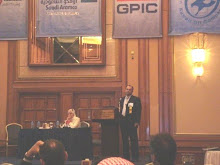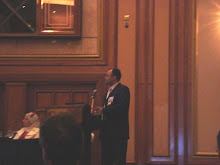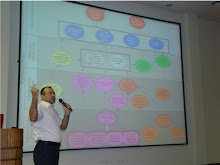Dissimilarity is the degree to which individual attributes are/aren’t shared by other team members (Jackson, Stone & Alvarez, 1992). Recent studies examined its effect from different aspects (Pelled et al, 2001; Pelled et al., 1999; Jehn et al., 1997).
Consider Informational, Visible and Value dissimilarities specifically (Harrison et al., 1998; Pelled et al., 1999); Where informational dissimilarity relates to differences in occupancy, profession and working experience and visible dissimilarity refers to being different in a ‘visible’ way like age, skin color and ethnicity whereas value dissimilarity corresponds to distinction in ethics, approaches, methodologies of performing activities.
Elizabeth Hobman (et al,2003) state that perceived dissimilarity results in conflicts associated with the individual’s level of participation in team work. Perception of dissimilarity should be taken into account when managing projects. Value dissimilarity induces beneficial task conflicts but has negative impact on relationships among team members. This impact can be downsized by aligning members to ‘Goals’ while keeping the approach ‘loose’ (Schneider et al, 1999); and by educating teams on importance of commitment to ‘team unity’ (Gelfand et al, 1996). Teams should also be open to diversity so as to motivate dissimilar members’ involvement and explore new approaches even playing the devil’s advocate (Turner et al, 1994). Organizations have a stake here, where processes, procedures and regulations should emphasize on ‘equality’ and team evaluation should be based on achievements.
The case I experienced was an example of how information and value dissimilarities influence team performance। If the committee had the chance to continue with the diversified approaches, the outcome would have been enhanced.
Regards,
Samer
Note: References included in the posting comment
About The Author

- Eng. Samer el Barakeh, MPM, PMP
- Samer el Barakeh was born in Lebanon, 1973. He completed his Bachelor in Engineering-CCE at Beirut Arab University-Lebanon in 1996 with honours. Samer was granted Masters Degree in Project Management (MPM) from the University of Sydney-Australia with honours. He also gained the Project Management Professional (PMP) Credential from The Project Management Institute (PMI). Samer is a member of the Order of Architects and Engineers in Lebanon since 1996, The Project Management Institute (PMI), Arabian Gulf Chapter (AGC-PMI) and Lebanon Chapter-PMI. During his 13 years of professional experience in Lebanon, Australia and Saudi Arabia, Samer held many positions among them: Telecommunication Site Engineer, Site Manager, Low Current Service Head, and he is currently Senior Systems Analyst at the General Project Construction Division. Samer is a Project Management Consultant and Training Provider for universal organizations like Business Management Consultants (USA) www.bmc-online.com and PMCTQuest (Canada) www.pmctquest.com Samer is a Registered Training Provider for Project Management Professional (PMP), and he provides training in Program Management, Portfolio Management,PMO...
Select a topic to view content
- A comparison between PMBOK and Prince2 Methodologies and reflection on case study examples (1)
- ABC to Avoid Project Failure (1)
- Business Case and Quantitative Benefits (1)
- Do we need more 'Planners' ? (1)
- Fasilitator in Partnering-A Coincise Shot (1)
- How to Ensure Stratgic Alignment of Our Projects? (1)
- Individual Dissimilarity and Team Work (1)
- Knowledge Management (1)
- Maturity Models-The Pros and Cons (1)
- Organizational Advantages from Partnering (1)
- Organizational Maturity: Lets Head Upwards... (1)
- Organizational Strategy and Project Alignement (1)
- Practical Solutions 1 of 6: Introduce RMMM (1)
- Practical Solutions 2 of 6: Facilitate Change to Perk up Maturity (1)
- Practical Solutions 3 of 6: Leverage Organisational Culture Barrier (1)
- Practical Solutions 4 of 6: Organisational Cultural Alignment (1)
- Practical Solutions 5 of 6: Defining a Unified Decision Making Tool (1)
- Practical Solutions 6 of 6: Understanding The Paradox of Control (1)
- Programme Management to Implement Strategy (1)
- Project Management and Construction Management (1)
- Project Managers relocated before Proper Project Closure and Learning Lessons (1)
- Project Managers' Power (1)
- Strategic Planning (1)
- Successful Project Management Office-PMO (1)
- System Thinking: Archetypes at Work... (1)
- The Partnering Change Process (1)
- The Upper Hand… Leadership skills or Processes? (1)
- Thinking about change needed? Maybe you should be more ‘worried’ about how to make it real (1)
- Vision Mission and Objectives What and Why? (1)
- What is meant by Portfolio and Programme Management (1)
- Why Partnering in Organizations? (1)
December 16, 2006
Individual Dissimilarity and Team Work
Posted by
Eng. Samer el Barakeh, MPM, PMP
at
6:56 PM
![]()
![]()
Subscribe to:
Post Comments (Atom)
Followers
All Titles
A comparison between PMBOK and Prince2 Methodologies and reflection on case study examples
ABC to Avoid Project Failure
Business Case and Quantitative Benefits
Do we need more 'Planners' ?
Fasilitator in Partnering-A Coincise Shot
How to Ensure Stratgic Alignment of Our Projects?
Individual Dissimilarity and Team Work
Knowledge Management
Maturity Models-The Pros and Cons
Organizational Advantages from Partnering
Organizational Maturity: Lets Head Upwards...
Organizational Strategy and Project Alignement
Practical Solutions 1 of 6: Introduce RMMM
Practical Solutions 2 of 6: Facilitate Change to Perk up Maturity
Practical Solutions 3 of 6: Leverage Organisational Culture Barrier
Practical Solutions 4 of 6: Organisational Cultural Alignment
Practical Solutions 5 of 6: Defining a Unified Decision Making Tool
Practical Solutions 6 of 6: Understanding The Paradox of Control
Programme Management to Implement Strategy
Project Management and Construction Management
Project Managers relocated before Proper Project Closure and Learning Lessons
Project Managers' Power
Strategic Planning
Successful Project Management Office-PMO
System Thinking: Archetypes at Work...
The Partnering Change Process
The Upper Hand… Leadership skills or Processes?
Thinking about change needed? Maybe you should be more ‘worried’ about how to make it real
Vision Mission and Objectives What and Why?
What is meant by Portfolio and Programme Management
Why Partnering in Organizations?
















References:
ReplyDeleteGelfand, M. J., Kuhn, K. M., & Radhakrishnan, P. (1996). The effect of value differences
on social interaction processes and job outcomes: Implications for managing diversity.
In M. N. Ruderman, M. W. Hughes-James & S. E. Jackson (Eds.), Selected research on
work team diversity (pp. 53–71). Washington D.C: American Psychological Association.
Harrison, D. A., Price, K. H., & Bell, M. P. (1998). Beyond relational demography: Time
and the effects of surface- and deep-level diversity on work group cohesion. Academy
of Management Journal, 41(1), 96–107.
Hobman V.E, Bordia P., Gallois C., 2003, Consequences of Feeling Dissimilar From Others in a Work Team, University of Queensland, Journal of Business and Psychology, Vol. 17, No. 3, Spring 2003
Jackson, S. E., Brett, J. F., Sessa, V. I., Cooper, D. M., Julin, J. A., & Peyronnin, K. (1991).
Some differences make a difference: Individual dissimilarity and group heterogeneity
as correlates of recruitment, promotions, and turnover. Journal of Applied Psychology,
76(5), 675–689.
Jehn, K. A., Chadwick, C., & Thatcher, S. M. B. (1997). To agree or not to agree: The effects
of value congruence, individual demographic dissimilarity, and conflict on workgroup
outcomes. International Journal of Conflict Management, 8(4), 287–305.
Pelled, L. H., Xin, K. R., & Weiss, A. M. (2001). No es como mi: Relational demography and
conflict in a Mexican production facility. Journal of Occupational and Organizational
Psychology, 74, 63–84.
Pelled, L. H., Eisenhardt, K. M., & Xin, K. R. (1999). Exploring the black box: An analysis
of work group diversity, conflict, and performance. Administrative Science Quarterly,
44, 1–28.
Schneider, S. K., & Northcraft, G. B. (1999). Three social dilemmas of workforce diversity
in organizations: A social identity perspective. Human Relations, 52 (11), 1445–1467.
Turner, M. E., & Pratkanis. A. R. (1994). Social identity maintenance prescriptions for
preventing groupthink: Reducing identity protection and enhancing intellectual conflict.
The International Journal of Conflict Management, 5(3), 254–270.